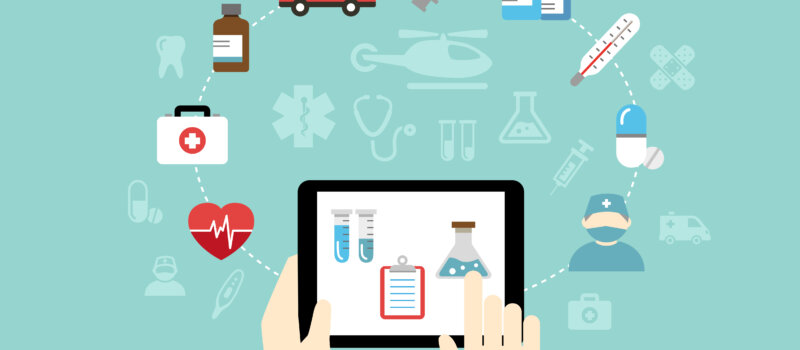Ever since the pandemic, higher education has needed to tackle new ways of teaching students. New tools and methods were adopted to help both students and teachers. These changes make classes more interactive, help students understand better and provide more convenient options for students.
As technology continues to evolve, it brings new opportunities for innovation and improvement in education. Understanding these technology trends in higher education is crucial.
Key Takeaways
- Schools are taking advantage of new technology trends to help students.
- Remote learning and e-learning platforms make education more flexible and accessible.
- Immersive technologies like VR/AR offer hands-on and interactive learning environments.
- Data-driven education and adaptive learning technologies provide personalized learning experiences tailored to each student’s needs.
Remote Learning
Remote learning is becoming more common in higher education. It allows students to learn from anywhere, making education more flexible and accessible. This shift has opened up new possibilities for students who might not be able to attend traditional classes due to distance or personal commitments.
The Rise of E-Learning Platforms
E-learning platforms offer many courses that students can take any time and anywhere. Students can study at their own speed and go back to lessons if needed.
These platforms include quizzes and assignments that help students track their progress. With video lectures, interactive content, and real-time feedback, e-learning platforms provide a comprehensive learning experience. E-learning platforms also have chat rooms allowing for students to talk to each other and to teachers.
Webinars
Webinars are live or prerecorded footage allowing students to learn from wherever they feel most comfortable. They are often used for large lectures and seminars. Webinars can include interactive features like polls and Q&A sessions. This helps keep students engaged and allows them to participate actively. Webinars also allow guest speakers to join from different parts of the world.
Knowing how to supercharge your webinar will help students learn more efficiently. Students can gain insights from experts in their field, stay updated on the latest developments, and, most importantly, have fun while they learn.
Immersive Learning Technologies
Immersive learning technologies provide new ways for students to engage with content. These technologies offer hands-on experiences and interactive learning environments. These tools enhance students’ understanding of complex subjects through simulations and virtual environments.
Virtual and Augmented Reality
Virtual and augmented reality (VR/AR) are becoming part of higher education. They offer experiences that traditional methods cannot. For example, medical students can practice surgeries in a virtual operating theater. History students can explore ancient places as though they’ve gone back in time. VR/AR can also be used in engineering and architecture to create virtual models of projects.
Additionally, VR/AR can create immersive field trips and laboratory experiences, making learning more engaging and impactful. These technologies provide hands-on experience and visual learning opportunities.
Innovative Technologies
Innovative technologies are constantly emerging in higher education. These tools provide new ways of teaching and learning, making the process smoother. By embracing these advancements, institutions can provide more effective and engaging educational experiences.
Artificial Intelligence and Chatbots
Artificial intelligence (AI) and chatbots are the newest technology trends in higher education. AI can help teachers grade papers and give feedback. Chatbots can answer students’ questions anytime, making it easier and faster for them to get help.
AI can also help with personalized learning by suggesting resources based on student needs. These technologies save time for teachers and provide quick support for students. Additionally, AI-powered tools can analyze student performance data and recommend personalized learning paths.

Data-Driven Education
Data-driven education uses information to improve teaching and learning. By analyzing data, schools can make better decisions and offer personalized learning experiences. This approach helps identify areas where students are struggling and provides targeted interventions to support their success.
support their success.
Learning Analytics
Learning analytics is appearing more frequently throughout schools. This technology trend in higher education involves collecting and studying data about how students learn. Schools can find patterns where students are struggling. Data-driven methods allow for personalized learning.
Teachers can change their teaching methods to fit students’ needs better. Learning analytics can also predict which students might struggle and need extra support. By using data to track progress and outcomes, schools can continuously improve their educational strategies.
Adaptive Learning Technologies
Adaptive learning technologies are designed to adjust to each student’s learning style and pace. These technologies use data to provide personalized learning experiences. For example, if a student struggles with a topic, the system can offer extra practice or different explanations.
Adaptive learning tools can include interactive textbooks and online tutors that adjust content based on student performance. These technologies ensure that each student receives the right level of challenge and support, enhancing their learning experience.
Mobile Learning
Many students use smartphones and tablets to study. Schools are creating apps and mobile-friendly websites. These tools help students access course materials, watch videos, and join discussions on the go.
Apps can also send reminders about assignments and deadlines, helping students stay organized. With mobile learning, students can study anytime and anywhere, making the most of their time.
Why This Matters
Understanding technology trends in higher education is crucial because it directly impacts the quality and accessibility of education for students worldwide. Embracing these technologies enhances student engagement, personalizes learning, and improves educational outcomes.
Moreover, it prepares students for a tech-driven world, ensuring they have the skills needed for future careers. As schools adopt these trends, they can offer more inclusive, flexible, and effective education, meeting the diverse needs of their student populations and fostering a culture of continuous improvement and innovation.

Looking Ahead
The future looks exciting with these technology trends in higher education. As technology advances, education will continue to improve. Students will have more opportunities to learn and succeed. Institutions that embrace these changes will be able to offer more flexible, engaging, and effective education.
As education continues to change, your institution might find itself in need of some of the previously mentioned services. Contact us and see if any of our services could help any of your students!
September 17, 2024
Explore other posts on these topics: Higher Education




